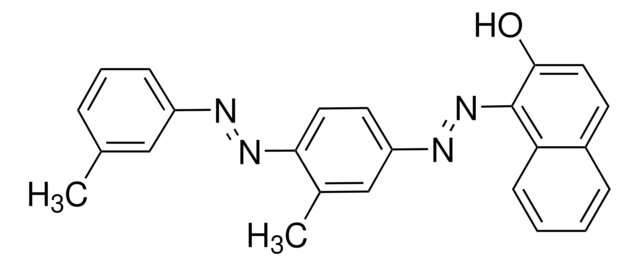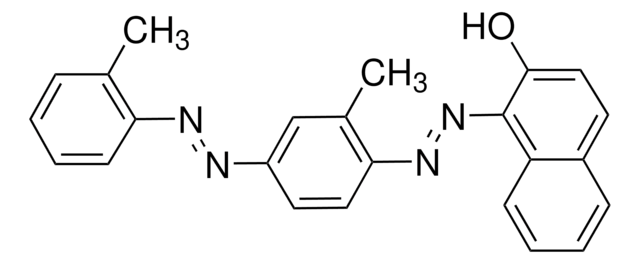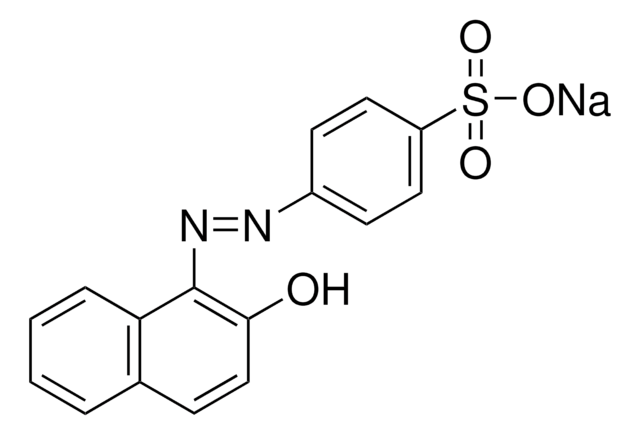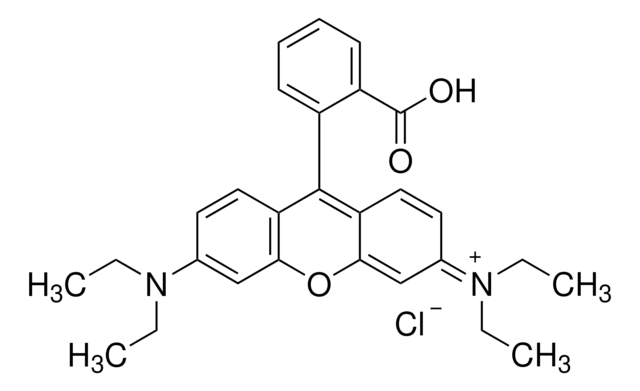14-742-M
FGFR2 (N549H) Protein, active, 10 µg
Active, N-terminal, 6His-tagged, recombinant, human FGFR2 (N549H), amino acids 456-770. For use in Kinase Assays.
Sign Into View Organizational & Contract Pricing
Select a Size
25 MG
CA$190.00
CA$190.00
Please contact Customer Service for Availability
Select a Size
Change View
25 MG
CA$190.00
About This Item
UNSPSC Code:
12352202
eCl@ss:
32160405
NACRES:
NA.32
CA$190.00
Please contact Customer Service for Availability
Recommended Products
biological source
human
Quality Level
recombinant
expressed in baculovirus infected Sf21 cells
specific activity
6250 U/mg
mol wt
Mw 38.1 kDa
manufacturer/tradename
Upstate®
technique(s)
activity assay: suitable (kinase)
NCBI accession no.
UniProt accession no.
Gene Information
human ... FGFR2(2263)
General description
N-terminal, 6His-tagged, recombinant, human FGFR2 (N549H), amino acids 456-770.
Product Source: recombinant, human FGFR2 (N549H), amino acids 456-770, expressed by baculovirus in Sf21 insect cells.
Application
Research Category
Metabolism
Metabolism
Research Sub Category
Cardiovascular Disease
Metabolic Disorders
Cardiovascular Disease
Metabolic Disorders
Biochem/physiol Actions
Protein Target: FGFR2
Target Sub-Family: TK
Quality
Routinely evaluated by phosphorylation of 500 μM GGEEEEYFELVKKKK.
Purity was assessed by SDS-PAGE and Coomassie blue staining using 3μg of active GFGR2 (N549H).
Purity was assessed by SDS-PAGE and Coomassie blue staining using 3μg of active GFGR2 (N549H).
Unit Definition
Specific Activity: where one unit of FGFR2 (N549H) activity is defined as 1nmol phosphate incorporated into 500μM GGEEEEYFELVKKKK per minute at 30°C with a final ATP concentration of 100µM.
Physical form
10 μg of enzyme in 6.3 μL of 50 mM Tris/HCl pH 7.5, 300 mM NaCl, 0.1 mM EGTA, 0.03% Brij 35, 270 mM sucrose, 1 mM benzamidine, 0.2 mM PMSF, 0.1% 2-mercaptoethanol. Frozen solution.
Ni2+/NTA-agarose
Storage and Stability
Stable for 6 months at -70°C from date of shipment. For maximum recovery of product, centrifuge original vial prior to removing the cap.
Rapidly thaw the vial under cold water and immediately place on ice. Aliquot unused material into pre-chilled microcentrifuge tubes and immediately snap-freeze the vials in liquid nitrogen prior to re-storage at -70°C.
Rapidly thaw the vial under cold water and immediately place on ice. Aliquot unused material into pre-chilled microcentrifuge tubes and immediately snap-freeze the vials in liquid nitrogen prior to re-storage at -70°C.
Legal Information
UPSTATE is a registered trademark of Merck KGaA, Darmstadt, Germany
Disclaimer
Unless otherwise stated in our catalog or other company documentation accompanying the product(s), our products are intended for research use only and are not to be used for any other purpose, which includes but is not limited to, unauthorized commercial uses, in vitro diagnostic uses, ex vivo or in vivo therapeutic uses or any type of consumption or application to humans or animals.
signalword
Warning
hcodes
Hazard Classifications
Skin Sens. 1
Storage Class
10 - Combustible liquids
wgk_germany
WGK 2
flash_point_f
Not applicable
flash_point_c
Not applicable
Certificates of Analysis (COA)
Search for Certificates of Analysis (COA) by entering the products Lot/Batch Number. Lot and Batch Numbers can be found on a product’s label following the words ‘Lot’ or ‘Batch’.
Already Own This Product?
Find documentation for the products that you have recently purchased in the Document Library.
Customers Also Viewed
R Ghadially et al.
Journal of the American Academy of Dermatology, 26(3 Pt 2), 387-396 (1992-03-01)
Ointments (e.g., petrolatum) are thought to be occlusive, thereby blocking transcutaneous water loss and trapping water under the skin's surface. If this premise is correct, then petrolatum should delay barrier recovery after barrier perturbation, as shown previously in occluded murine
Junbo Liu et al.
Zhongguo Zhong yao za zhi = Zhongguo zhongyao zazhi = China journal of Chinese materia medica, 36(8), 1054-1059 (2011-08-04)
To investigate the effect of spearmint oil on emphysema-like changes and the expression of tumor necrosis factor-alpha (TNF-alpha), interleukin-1beta(IL-1beta), matrix metalloproteinase-9 (MMP-9) and tissue inhibitor of metalloproteinase-1 (TIMP-9) in lipopolysaccharide (LPS) treated rats. Emphysematous changes model was induced by intratracheal
G Schmitz et al.
Journal of chromatography, 320(1), 253-262 (1985-02-22)
A capillary isotachophoretic separation technique was developed for lipoproteins in native serum which, compared with previous electrophoretic techniques, has negligible molecular sieve effects, does not need gel casting, is suitable for whole serum and has a high discriminative power for
Dennis P Curran et al.
Organic letters, 6(6), 1021-1024 (2004-03-12)
[reaction: see text] Partition coefficient measurements and experiments with a dye show that a new fluorous "phase vanishing reaction" described by Jana and Verkade occurs by an extractive mechanism. This mechanism is contrasted with the original diffusive phase-vanishing reactions introduced
K Umezawa et al.
Journal of pharmacobio-dynamics, 14(10), 591-598 (1991-10-01)
Oil violet in a fat emulsion was taken up into the parenchymal cells of rat liver in vitro. The uptake was greater at 37 degrees C than 25 degrees C or 4 degrees C, and it was increased by addition
Our team of scientists has experience in all areas of research including Life Science, Material Science, Chemical Synthesis, Chromatography, Analytical and many others.
Contact Technical Service








